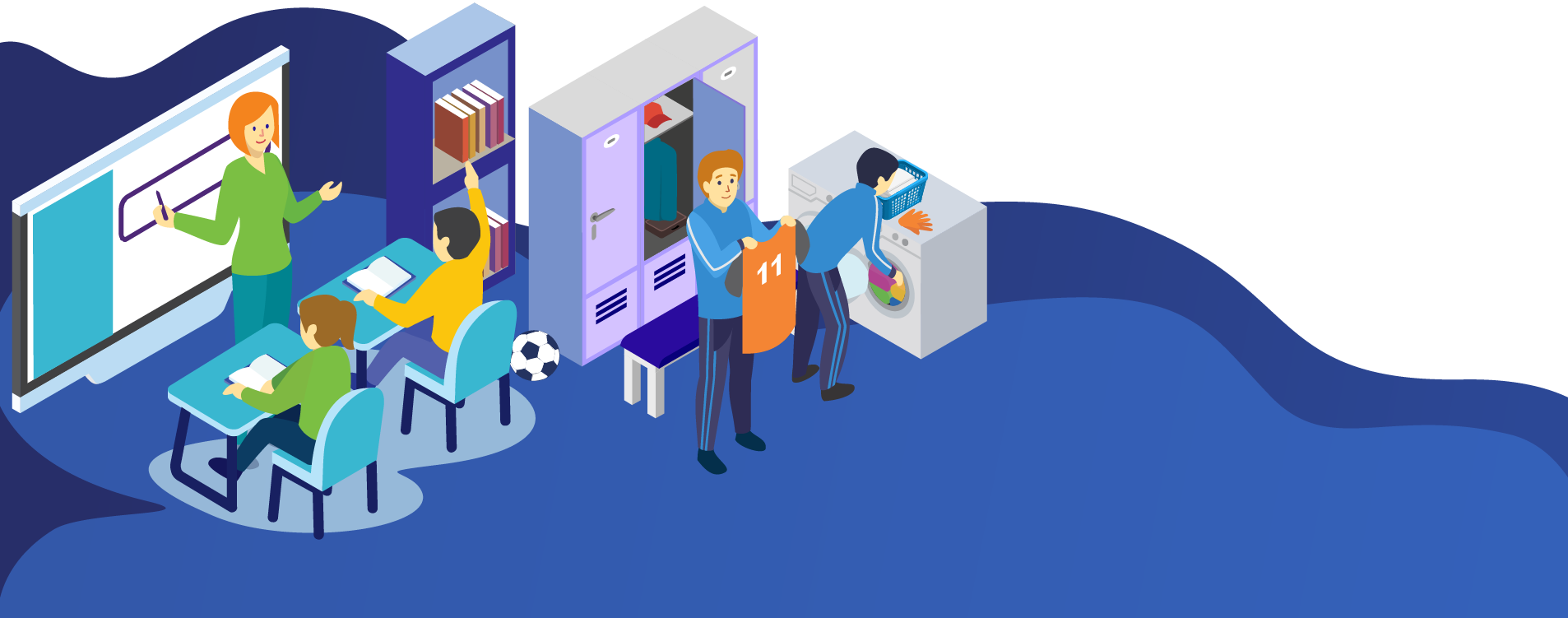How to use Chromebooks in your classroom
Chromebooks plus the power of cloud computing add up to top marks in the classroom. Known for their simplicity and…

Chromebooks plus the power of cloud computing add up to top marks in the classroom.
Known for their simplicity and security, Chromebooks are a popular addition to many classrooms. Their continued success in the education sector is a testament to the digital revolution that is transforming the way we teach and learn.
Good for students, teachers and school budgets
The devices themselves are ideal for students of all ages. Robust enough to withstand the rigours of the classroom, quick to boot up and use, and with the convenience of a built-in keyboard and mousepad, they tick all the boxes for hassle-free learning.
With Google’s many tools for productivity, collaboration and communication right there at your fingertips, Chromebooks lighten the load for teachers too. Google Workspace for Education, for example, has an array of clever apps that help you organise classwork, share feedback and keep on top of admin.
With an open-source operating system and less processing power than the alternatives, Chromebooks are affordable too, meaning they won’t make too much of a dent in your budget.
What’s different about Chromebooks?
A more traditional computer than mobile-first iPads, and an affordable alternative to Windows or macOS laptops, Chromebooks are the best-selling device in infant to secondary level education worldwide.
They run Google’s Chrome operating system (OS), which is built around the Chrome browser and designed to support Google applications and services.
It’s easy to see why schools rate them, given their many selling points:
- light, portable design
- built for durability
- fast to boot up and use
- easily shareable for multiple users
- web-centric with offline apps and services
- long battery life
- automatic updates
- multiple layers of security
Chromebooks and the cloud
Cloud storage is integrated into Chrome OS. This means:
- it’s easy to share Chromebooks across multiple classes because student work and information is saved to the cloud rather than the device itself (each user simply signs in to their individual Google account)
- files can be accessed from other devices if required
- your files are safe even if your Chromebook gets lost or damaged.
Because they use web-based programs and cloud storage, Chromebooks don’t need much processing power or local storage space. This explains why they’re faster than other laptops and lightweight too.
Work doesn’t need to stop if your internet connection does. Many Chrome OS apps (such as Google Docs, Sheets and Slides) are designed to work offline and sync the changes to the cloud automatically when you’re reconnected.
Made for sharing: the Google Workspace
Chromebooks are high achievers when it comes to collaboration. As well as being easily shareable between students, they can access a wealth of collaboration tools courtesy of Google Workspace for Education.
This portfolio of tools and services – all built and optimised for Chromebooks – helps schools collaborate effectively, maximise teaching efficiency and boost productivity. And all while keeping the digital learning environment safe and protecting your school’s data. Experts agree that Chromebooks are among the most secure computers you can buy.
With access to Google Classroom, Chat, Docs, Drive, Forms, Meet, Slides, Vault and many other Google Apps for Education, Google Workspace for Education is an invaluable addition to your teaching toolkit. These seamlessly integrated apps help teachers to:
- collaborate with students in real-time
- communicate with colleagues
- create and share online teaching materials
- organise schedules and assignments
- track student progress
- and much more.
The basic edition of Google Workspace for Education is free, and paid upgrades offer additional premium features.
Google Classroom
Included with all editions of Google Workspace for Education, Google Classroom is a seamless learning management platform that brings together all your teaching tools and helps you streamline classroom management tasks.
It promotes online collaboration and boosts creativity and communication, thanks to the easy sharing of resources, flexible commenting features and real-time interactions. Ultimately, it can also save you a lot of time, as it makes it easy to organise teaching admin, collaborate with other teachers, and manage marking and feedback for multiple classes – all in one virtual place.
See the difference in your classroom
Planning and workflow
Designed to simplify the processes of creating, distributing and marking assignments, Google Classroom makes it easy to plan lessons, share resources, schedule tasks and view real-time progress. When you create an assignment, you can schedule it for later or post it immediately. It’s easy to set due dates, add attachments and tag topics. You can also post reference materials and other topic-related reading.
- Share learning resources and supporting materials
- Prepare and schedule tasks across all your classes
- Assign work to multiple classes, groups or individuals
- Distribute assignments, triggering automatic notifications for students
- Schedule posts to multiple classes
- Organise and sort your posts by topic
- Allow students to edit shared files or work on individual copies
- Check in on student work and view real-time progress
- Create student and teacher to-do pages
- Easily keep track of work coming in
Feedback and marking
Making the marking process more manageable is another big win for Google Classroom. Plus, it’s easy to locate and review specific student files using Google Drive.
- Set upgrading systems and rubrics
- Export rubrics to share with other teachers
- Use Classroom’s drawing and writing tools to annotate students’ work
- Use the comments feature to add notes for the whole class or individuals
- Check work for originality
- Export grades to your school’s management information system
Communication
Communication and collaboration are central to the Google Classroom experience. The opportunities it offers for group working, real-time feedback and interactive activities are impressive.
- Foster a collaborative learning environment with group assignments
- Create and post discussion questions, polls and surveys
- Use announcements to put content in your classroom stream without creating an assignment
- Switch between collaborating one-to-one and with the whole class
- Respond to students’ questions and comments on assignments and announcements
- Create study groups for students or teachers
- Keep parents and guardians in the loop with optional work summaries
- Collaborate with other teachers on lesson plans and content
Get creative
There are endless creative possibilities for making learning fun and interactive with Google Classroom.
- Share ebooks from Google Play Books in paid editions of Google Workspace for Education
- Add videos to your lessons and assignments
- Integrate your favourite EdTech tools and content to maximise learning opportunities
- Use Classroom add-ons in paid editions of Google Workspace for Education
Personalise
Google Classroom takes a personalised approach to make sure everyone can learn in the best way for them.
- Adjust settings for accessibility
- Set up student accounts for individualised education plans
- Assign material to particular groups that need differentiated coursework
With the combined power of easy-to-use Chromebooks and Google’s many web-based educational apps, it’s time to customise your digital classroom and embrace new opportunities for teaching and learning.
Find out more about Chromebooks for your school
Spread the cost of Chromebooks! Contact our team of experts today and ask about compliant lease agreements.

